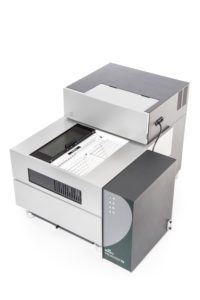A Taylor dispersion instrument allows the determination of the diffusion coefficient, the hydrodynamic radius and the intrinsic viscosity of molecules. The method measures the dispersion of a solute pulse injected into a flowing fluid in a capillary using UV-based detection. The technique can analyse single molecules as well as complex samples using distribution analysis. Measurements can be performed in complex buffers and are not impeded by the presence of aggregate trace. One of the major advantages is the ability to measure radii as low as 0.1 nm with good precision.
What are the sample requirements?
- Pure samples are preferred.
- The required sample concentration is about 1 mg/mL.
- The required sample volume is 50 μl, but sample consumption is only 10 µl (up to 40 µl can be recovered).
What other specific considerations are relevant?
- If the aim is to measure hydrodynamic radii, the sample should be free of significant aggregates, which will otherwise block the capillary.
- Sizes larger than 50 nm in radius are difficult to measure.
- The sample needs to absorb at one of the following wavelength 214 nm, 254 nm, 280 nm.
- The size resolution is relatively low compared to an (much more complex) AUC experiment.

